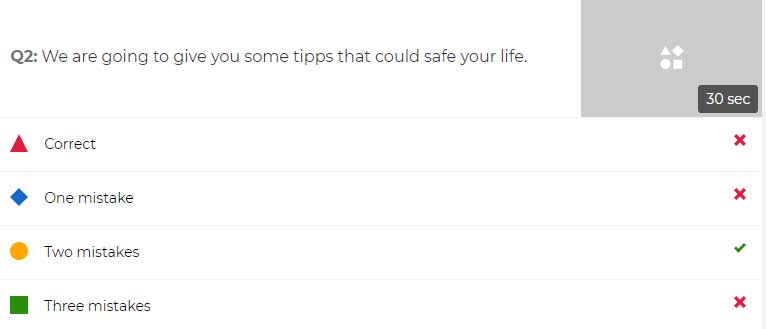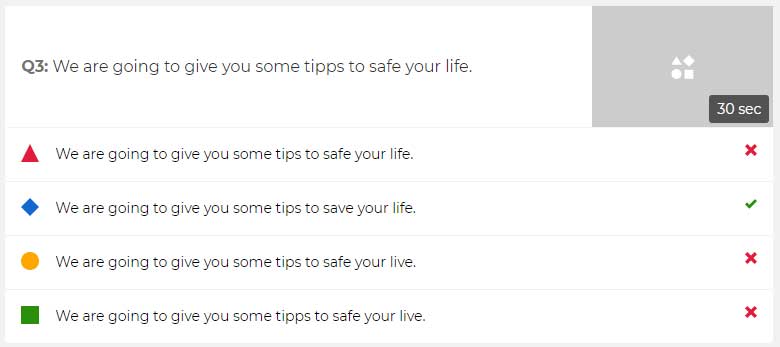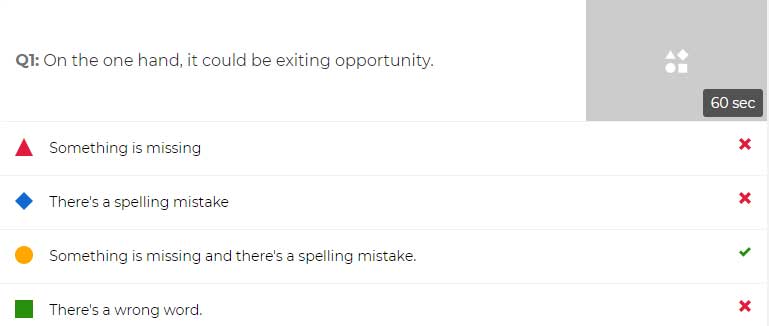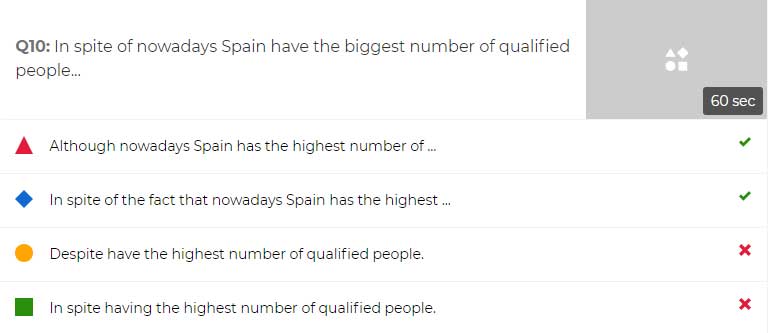Giving feedback about students’ writing is often tough, as teachers have to decide which mistakes should be highlighted and how students could receive information that would help them avoid repeating the same mistakes in the future.
Some mistakes are made by most students and a teacher may consider that a whole-class explanation about these issues may be more productive that handing out individual corrections or holding repetitive tutorial sessions with each student.
Kahoot can help teachers to improve the way they give feedback about students by encouraging reflection on language mistakes while enjoying peer collaboration and competition.
Error correction can be carried out with different exercise types:
- Identifying the number of mistakes in a sentence. This can be followed by a question in which students have to work on the same sentence, but choosing its correct version.
Here we can see a question which asks students to determine how many mistakes there are in a sentence.
Once they know that there are two mistakes, they have to find them in the next question.
- Identifying the types of mistakes. This is somehow metalinguistic work, but it may be quite useful to help students work with guided error correction (i.e. with a correction where the teacher writes a code for a mistake (for example “wrong word”) next to a line, and students have to find it and correct it before handing in the final version.
- Deciding if a sentence is right or wrong. In this type of questions the teacher should be aware that eliciting why the sentence is right or wrong is usually very important, as we’ll usually select a sentence to highlight a specific language aspect.
It’s important to consider the time allowed for each question. If students must decide if a sentence is right or wrong, 20 or 30 seconds may be enough, depending on the length and complexity of the sentence. However, if they have to choose among four possible versions of a sentence, a minimum of 60 seconds should be allowed for. If we are generous when it comes to setting up answer time, we may encourage positive peer discussion



